Witch ~ 17 ~ Masculine Androgynous, preferred pronouns: he/him or they/them ~ No religion, I love all Gods equally, but as bros, I don't... Worship them. I'm a fallen cuz of a reason. I wanna be free. ~ Fallen Angelkin~ Really loves sleep, yet suffers from insomnia, ain't that sad? Also, it's gonna be my e-Grimore/Books of Shadows
Don't wanna be here? Send us removal request.
Text
Incense correspondences
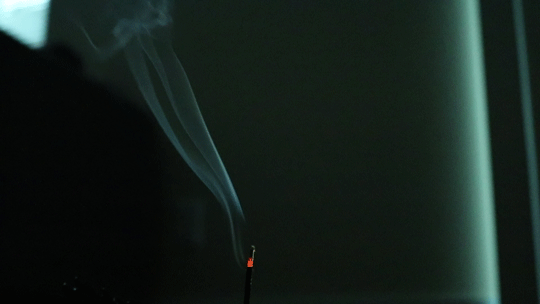
🕯Allspice - Money, fortune, luck, prosperity
🕯Aloe - Higher vibrations, prosperity, strength, love
🕯Amber - Bliss, healing, comfort, love
🕯Anise - Balance, meditation
🕯Basil - Protection, luck, focus, faithfulness, money, love divination, courage
🕯Bay - Mental powers, prophetic dreams
🕯Bergamont - Wealth, happiness, focus, protection, courage, balance, motivation
🕯Cardomom - Focus, courage, motivation, clarity
🕯Cedar - Purification, love, healing, psychic powers, nightmares
🕯Chamomile - Protection, calm, peace, sleep
🕯Cinnamon - Protection, wealth, success, prosperity, psychic powers
🕯Clove - Cleansing, purification, wealth, stopping gossip, healing, success, divination, protection
🕯Copal - Purification, happiness, love, protection
🕯Citrus - Brightness, courage, confidence, luck, accomplishing goals
🕯Dragons Blood - Cleansing, energy, courage, purification, love, strengthening magical powers
🕯Eucalyptus - Cleansing, protection, purification, healing
🕯Frankincense - Cleansing, astral travel, courage, purification, consecration, protection, meditation, luck
🕯Gardenia - Love, relationships, healing, peace
🕯Ginger - Money, love, power
🕯Heather - Calling and conjuring
🕯Honeysuckle - Wealth, bliss, relationships, healing
🕯Jasmine - Prophetic dreams, love, wealth, purification, astral projection, purification
🕯Juniper - Breaking curses and hexes, protection, psychic powers, healing, calmness
🕯Lavender - Sleep, love, cleansing, happiness, relaxation, healing
🕯Lemon - Love, healing, purification
🕯Mint - Cleansing, conjuring, money, sex, healing, protection
🕯Nutmeg - Psychic powers, meditation, prosperity
🕯Orange - Love, divination, wealth, luck
🕯Peppermint - Healing, animal magic, energy
🕯Pine - Purification, banishing, wealth, strength, grounding, cleansing, breaking hexes, healing
🕯Rose - Prophetic dreams, courage, fertility, blessings, healing, love
🕯Rosemary - Depression, purification, healing, youth, fairies, sleep
🕯Sage - Protection, purification, cleansing, wisdom, healing
🕯Sandalwood - Conjuring, spirituality, protection, healing, astral projection, wishes
🕯Sweetgrass - Conjuring, positive energy
🕯Thyme - Purification, healing, health.
🕯Vanilla - Sex, love, psychic powers
🕯Violet - Luck, love, wisdom, healing, protection
🕯Wormwood - Psychic powers
🕯Ylang-ylang - Hapiness, love, harmony
13K notes
·
View notes
Text
Harvest Moon

The Harvest Moon will reach its peak on September 14, at 12:33 AM EST. The Harvest Moon can appear in either September or October, as it is the full moon closest to the equinox. In those years that the September Moon does not fall close to the official beginning of Fall, it is known as the Full Corn Moon, Barley Moon, Singing Moon, or Wine Moon. The last crops of the season are being harvested during this moon cycle, and your winter stores should be close to full. Now is the time to check your own emotional and spiritual stores, to weave plans for the long nights and upcoming holidays and festivals. Mabon arrives soon, and with it the Autumn Equinox.
This Harvest Moon rises in Pisces, and you may experience an increased sensitivity to the energies around you. This full moon will bring about success in creative or spiritual endeavors. You may find your hands itching to create, to build and wave and bake as you prepare for winter. Don’t fight your natural inclinations; give in to the industrious and creative energies flowing through and around you. You might also feel the need to nest, to decorate, to fill your space with simple comforts. Don’t be afraid to indulge as you enter into the Autumn months!
The correspondences for the Harvest Moon are:
Earthy colors, such as browns and greens, or deep yellows
Bloodstone, Chrysolite, Citrine, Olivine, Peridot
Copal, Fennel, Rye, Skullcap, Valerian, Wheat, Witch Hazel
Bay, Hazel, Hawthorne, Larch, Oak
Aster, Lily, Morning glory, Narcissus
Earth magicks
675 notes
·
View notes
Text
More Basic Basics of Ancient Greek: How to pray the ancient way
So you’re a Hellenic polytheist, and you’ve decided to add a touch of history to your prayers: you want to say them, or part of them, in Ancient Greek. While this is by no means a requirement - the Gods will surely understand you no matter which language you speak - Ancient Greek in prayer and ritual can function like a liturgical language, and can make you feel closer to those who first practised this religion. But where to start? Which words to use? This post is here to help.
The following words and phrases are all drawn from ancient texts, ranging from the 8th century BC to the 4th century AD. (If you’re curious about where a certain phrase appears, you’re welcome to send me an ask.) Pick the ones that resonate most with you, try them out, and have fun!
Pro tip: before we start, I recommend that you get familiar with the alphabet and standard pronunciation, and for more versatility, check out the basics of Greek grammar and how the case system works.
However, if it’s all too much for you, skip to the end where I’ll offer a few templates ready for you to use!
Greetings and invocations
The most common Ancient Greek greeting, which you might’ve encountered before, is χαῖρε. When addressing several people or Gods, it’s χαίρετε. It literally means “rejoice!” and has a similar usage to “hail”, “salve/salvete” or simply “hi”.
In the Iliad 23.179, Achilles greets Patroclus’ dead soul with the phrase χαῖρέ μοι, ὦ Πάτροκλε, καὶ εἰν Ἀίδαο δόμοισι: I greet you (litt. “rejoice for me”), Patroclus, even in the home of Hades.
However, in prayers and hymns, χαῖρε/χαίρετε is less common as a greeting than as a farewell. A more common formula is κλυθί μοι: this means “listen to me”. When addressing several deities, use the plural form κλῦτε μοι.
The next thing you will need is the name of the deity or deities, in the vocative. This is the most important part: many prayers skip χαῖρε and κλυθί μοι and start directly with the deity. As in the quote above, the name can be preceded by ὦ, which is the equivalent of English “O”.
Here are the names of major Hellenic deities (nominative) with their forms in the vocative:
Ζεύς (Zeus): Ζεῦ
Ἥρα/Ἥρη (Hera): same as nominative
Ποσειδών (Poseidon): Πόσειδον
Δημήτηρ (Demeter): Δήμητερ
Ἀΐδης (Hades): Ἀΐδη
Ἑστία/Ἑστίη (Hestia): same as nominative
Ἀθηνᾶ/Ἀθήνη (Athena): same as nominative
Ἑρμῆς (Hermes): Ἑρμῆ
Ἄρτεμις (Artemis): Ἄρτεμι
Ἀπόλλων (Apollon): Ἄπολλον
Ἥφαιστος (Hephaistos): Ἥφαιστε
Διόνυσος (Dionysos): Διόνυσε
Ἄρης (Ares): Ἄρες
Περσεφόνη (Persephone): same as nominative
Bonus: in both nominative and vocative, God is θεός, Goddess is θεά, Gods is θεοί, and Goddesses is θεαί.
To invoke two or more deities, use και, τε και or τε… τε, which all mean “and”, e.g.: Ἄρτεμι καὶ Ἄπολλον, Ζεῦ τε καὶ Ἥρη, Δημήτηρ τε Περσεφόνη τε.
Another option is καλέω, “I call”, or κικλῄσκω, “I summon”. If you choose one of these, you will need the name of the deity and their epithets in the accusative, not in the vocative as above. (If you have trouble figuring out a certain deity’s name, let me know.)
Epithets
After calling upon the deity, you will need to qualify them using one or more epithets. These will need to be in the same case as the deity’s name (vocative or accusative, depending on the formula you chose). The Theoi Project provides lists of epithets for each deity which you may want to look through. Make sure to choose aspects and areas appropriate to your request, as in the following examples:
ἀλλ᾽ ἄγ᾽ Ἐλευσῖνος θυοέσσης δῆμον ἔχουσα / καὶ Πάρον ἀμφιρύτην Ἀντρῶνά τε πετρήεντα, / πότνια, ἀγλαόδωρ᾽, ὡρηφόρε, Δηοῖ ἄνασσα: but now, you who hold the people of sweet-smelling Eleusis, and Paros encircled by sea and rocky Antron, lady, giver of beautiful gifts, bringer of seasons, queen Deo (Homeric Hymn to Demeter 490-492)
The Homeric Hymn to Demeter is concerned with Demeter in her seasonal, fertility aspects, as well as how she came to be worshipped in Eleusis. The epithets chosen by the author in the above quote reflect this.
ὦ πότνια, πότνια, θύμασιν βροτησίοις / χαρεῖσα: o lady, lady, rejoicing in human sacrifice (Euripides Iphigenia in Aulis 1524-1525)
This line is spoken just before Iphigenia is sacrificed to Artemis, so it makes sense to describe the Goddess as appreciating this kind of ritual.
Ζεῦ ἄνα, Δωδωναῖε, Πελασγικέ, τηλόθι ναίων, / Δωδώνης μεδέων δυσχειμέρου: lord Zeus, Dodonian, Pelasgian, who lives afar, ruler of harsh-weathered Dodona (Iliad 16.233-234)
Here, Achilles is calling on a particularly archaic and venerable aspect of Zeus in the hopes that Patroclus will be kept safe. Dodona, the oldest known oracle of Zeus, and the Pelasgians, pre-Greek peoples, underline this ancient power.
Past worship
If making a request, you may want to mention past offerings and devotions you have made for the deity. This usually takes the form “if ever I…”, as in the Iliad 503-504: εἰ ποτε δή σε μετ’ ἀθανάτοισιν ὄνησα / ἢ ἔπει ἢ ἔργῳ: if ever I, among the immortals, pleased you in words or in actions…
In simpler words: εἰ ποτε σε (sg)/ὑμᾶς (pl) ὄνησα ἢ ἔπει ἢ ἔργῳ, “if ever I pleased you (sg/pl) in words or in actions”.
After this, you can move straight on to your prayer, or you can specify: μοι κρῆνον (sg)/κρῆνατε (pl) ἐέλδωρ, “fulfill (sg/pl) my wish”, or λιτὰς ἐμῶν δέξο/δέξασθε, “receive my prayers”.
Supplications and thanksgiving
Then, finally, you get to the actual prayer. This can take two forms: supplication (please grant me a thing) or thanksgiving (thank you for granting me a thing).
In a supplication, you can either use a verb in the imperative (grant me a thing) or in the optative (may you grant me a thing). Though giving orders to a deity may seem strange, neither is more polite or appropriate than the other - you can choose whichever you prefer. Here are a few verbs you might find useful:
φέρε/φέρετε (imperative sg/pl), φέροις/φέροιτε (optative sg/pl): to bring (+ accusative)
πέμπε/πέμπετε, πέμποις/πέμποιτε: to send (+ acc.)
δίδου/δίδοτε, διδοῖς/διδοῖτε: to give (+ acc.)
ἰάτρευε/ἰατρεύετε, ἰατρεύοις/ἰατρεύοιτε: to heal (+ acc.)
ἐπιμελέου/ἐπιμελέσθε ὑπέρ, ἐπιμελέοιο/ἐπιμελέοισθε ὑπέρ: to take care of X (+ genitive)
Some things you can pray for:
ἐγω (nom.), με/ἐμε (acc.), μου/ἐμου (gen.): I, me
for “my X”, use “X μου”
μήτηρ (nom.), μητέρα (acc.), μητρός (gen.): mother
πατήρ, πατέρα, πατρός: father
ἀδελφός, ἀδελφόν, ἀδελφοῦ: brother
ἀδελφή, ήν, ῆς: sister
φίλος, ον, ου (male) φίλη, ην, ης (female): friend
οἶκος, ον, ου: home
ἀλκή, ήν, ῆς or βία, αν, ας: strength
θάρρος, ος, ους: emotional strength, courage
ἀγαθή τύχη, ἀγαθήν τύχην, ἀγαθῆς τύχης: good luck
ὑγίεια, αν, ας: health
εἰρήνη, ην, ης: peace
σωτηρία, αν, ας: safety, preservation
In a fragment of a poem by Simonides (PMG 543), Danae prays that her troubles reach an end, saying εὑδέτω δ’ ἄμετρον κακόν: may this endless sorrow sleep. Εὑδέτω κακόν or variants like εὑδέτω φόβον (”may fear/panic sleep”), εὑδέτω νόσον (”may illness sleep”) or εὑδέτω ἔριν (”may quarrel sleep”) could be a nice image to include.
When it comes to thanksgiving, a common phrase is ἐμοῦ ἔκλυες/ἐκλύετε εὐξαμένου, “you listened to me when I prayed”. You can follow it with (καὶ) νῦν χάριν φέρω σοι/ὑμῖν, “(and) now I bring you thanks”. Εὐχαριστῶ σοι/ὑμῖν, “I am thankful to you”, is an alternative which is still widespread in modern Greece, though in ancient times, it was mostly used within Christianity.
Farewells
Once you have spoken your prayers, it is time to take your leave of the deity. This is most commonly done using χαῖρε/χαίρετε, as mentioned above. If you wish, you can name the deity again along with a couple of epithets. Telling them you will remember them in future prayers is a nice touch; the Homeric Hymns use αὐτὰρ ἐγὼ καὶ σεῖο καὶ ἄλλης μνήσομ᾽ ἀοιδῆς: but I will remember you, and another song. A simpler, adapted version would be σοῦ/ὑμῶν μνήσομαι καὶ ἄλλης εὐχῆς, “I will remember you, and another prayer”. Another possibility could be σοῦ/ὑμῶν μνήσομαι ἔπει καὶ ἔργῳ, “I will remember you in words and in actions”.
In summary
χαῖρε/χαίρετε: hail
κλυθί μοι/κλῦτε μοι: listen to me
καλέω or κικλῄσκω: I call, I summon
εἰ ποτε σε/ὑμᾶς ὄνησα ἢ ἔπει ἢ ἔργῳ: if ever I pleased you in words or in actions
μοι κρῆνον/κρῆνατε ἐέλδωρ: fulfill my wish
λιτὰς ἐμῶν δέξο/δέξασθε: receive my prayers
εὑδέτω X: may X sleep
ἐμοῦ ἔκλυες/ἐκλύετε εὐξαμένου: you listened to me when I prayed
νῦν χάριν φέρω σοι/ὑμῖν: now I bring you thanks
εὐχαριστῶ σοι/ὑμῖν: I am thankful to you
σοῦ/ὑμῶν μνήσομαι καὶ ἄλλης εὐχῆς: I will remember you, and another prayer
σοῦ/ὑμῶν μνήσομαι ἔπει καὶ ἔργῳ: I will remember you in words and in actions
Prayer examples
With all this, you can now create your own short prayers in Ancient Greek! Below I have written out a few templates you can work with. If you have any questions, or if you need help figuring out a certain phrase, I’m happy to help!
A thanksgiving prayer to Zeus:
Ὦ Ζεῦ, ὕπατε, πάτερ ἀνδρῶν τε θεῶν τε, ἐμο��� ἔκλυες εὐξαμένου καὶ νῦν χάριν φέρω σοι. Χαῖρε, Ζεῦ ἄνα, καὶ σοῦ μνήσομαι ἔπει καὶ ἔργῳ.
O Zeus, most high, father of men and Gods, you listened to me as I prayed and now I bring you thanks. Hail, lord Zeus, and I will remember you in words and in actions.
A prayer to Artemis for anxiety relief:
Κλυθί μοι, Ἄρτεμι σώτειρα, ἡμερασία, λυσιμέριμνε, καὶ εἰ ποτε σ’ ὄνησα ἢ ἔπει ἢ ἔργῳ, μοι κρῆνον ἐέλδωρ˙ δεῖμα μου πέμποις εἰς ὀρέων κεφάλας, καὶ φέροις εἰρήνην. Χαῖρε, φίλη θεά.
Listen to me, Artemis saviour, of a gentle nature, deliverer of troubles, and if ever I pleased you in words or actions, fulfill my wish: may you send my fear away to the summits of the mountains, and bring down peace. Hail, dear Goddess.
A prayer to Apollon and Asclepios for a sick friend:
Καλέω Ἀπόλλωνα ἰατρόν καὶ Ἀσκληπιόν ἤπιον, φιλολάους˙ ἰατρεύετε φίλον ἐμου καὶ δίδοτε αὐτῷ ὑγίειαν, τε καὶ εὑδέτω νόσον.
I call upon Apollon the healer and kind Asclepios, lovers of the people: heal my friend and give him good health, and may illness sleep.
3K notes
·
View notes
Text
read it could save you
I don’t know if this post has been made yet but I just want to warn everybody that if someone stops you in a parking lot and asks you if you’re interested in some perfume and hands you a paper to smell, PLEASE DON’T SMELL IT.
i repeat, DON’T SMELL IT.
Apparently the sample papers are being laced with a drug to knock you out. Please signal boost this. It can save someone’s life!
257K notes
·
View notes
Photo
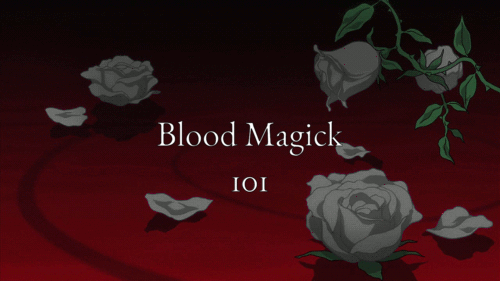
Blood Magick 101
One of the most common things I am asked besides how to begin in witchcraft is, “What is Blood Magick? Is it real?”
The short answer is…yes, but not in the way you think. Please keep in mind while you read this that a lot of closed religions use blood as an integral part of their practice and how it affects their practice is usually very different from how it affects the general open practices. This post does not apply to those closed packages as I do not practice them or possess any in-depth knowledge of how they work, but rather the general open practices with blood. If you are a member of one of those closed religions, however, please feel free to add onto this post with your experiences!
What is Blood Magick?
When we hear the phrase, “Blood Magick”, we might think of sacrifices, cutting our hands open with sacrificial blades, or, if you’re like me, you think of the big “no-no” practice that universally brands you as evil in the video game series, Dragon Age. This is all a result of popular media displaying this magick as such. In reality, blood magick is not as exciting as it is portrayed in media and can, in fact, be totally painless! General Blood Magick is when you use blood as a source of energy for your spell, ritual, charm, etc. It can reap benefits, but it very unstable and your results might not be what you expect. While the blood used is usually your own, it doesn’t need to be. I have known witches who have used game animal blood! Wherever you get your blood, it is important to receive it ethically!*
How can I be safe when using Blood?
It is important for you to use certain protocols when dealing with blood, before any magick is in involved. Here are some general ones I’ve learned from a phlebotomist:
Never reuse needles
Never share needles
Do not attempt if you are anemic or you have any blood clotting disorder/ are on any blood-thinning medication such as Plavix
Always dispose of needles properly so that there is no chance for children, animals, garbage men, or even yourself can get poked. They actually make containers for you to dispose needles in.
If you use a sharp object to acquire blood, ensure that the area you are using it on is clean and the needle is always sterile beforehand
Always know the source of the blood you are using, but also be sure to never get blood in any open wounds, cuts, or in your eyes. If this happens with blood you are not familiar with, immediately go to an emergency room to get preventative care.
DO NOT INGEST BLOOD. IT IS DANGEROUS AND CAN LEAD TO A LOT OF DISEASES PLUS POISONING
It’s actually preferable if you use sanitary disposable gloves when handling blood, but at the very least, thoroughly clean any skin that got blood on it immediately.
If, at any time, you can not control the bleeding, go to the emergency room. You might need stitches.
Do not try to acquire blood from any vein or vessel nor should you use any sharp object near one.
DO NOT HANDLE A SHARP OBJECT WHILE INTOXICATED IN ANY WAY. Look, I drink and don’t judge others who do so or like to get high. I know a lot of witches incorporate drugs into their craft. However, never use a sharp object when intoxicated. Your control and judgement will be compromised and you could seriously injure yourself without knowing. If it is absolutely necessary, collect the blood beforehand.
Why would I use Blood Magick?
Blood magick is used when you need to infuse your very essence or a small part of your life energy into a spell, if using your blood, or the essence of a particular animal or their life energy. It is one of the most powerful ways you can charge give energy to a spell. If you are not very experienced in this, you should only use it in very desperate circumstances when all other options have been exhausted. I have seen witches use deer blood in a spell calling upon Artemis, the Greek God of the Hunt (among other things) and I have a friend who used blood magick when trying to save her house from foreclosure when she was told there was almost no chance she could save it, even with the proper budgeting and payments.
Wait, you said I should only use it regularly if I was very experienced in it… what are the Magickal dangers of it?
Think of using Blood Magick as if using rocket fuel in a normal car. If you are an engineer, you might be able to build a car that can use rocket fuel reliably, but, if not, you most likely would build a non-functional or unreliable car, or worse, a car that just explodes.
When you use blood, I mentioned that you are putting your very essence and energy into the spell. This very much ups the chance that you will be directly affected by the outcome of the spell, even if it was done for or on someone else. This goes double with any curses or hexes. It is also possible that you might get too much of the result you wanted or your result way too soon. If you are using animal blood, it is possible that it’s correspondence won’t agree with the purpose of the spell or the animal’s essence is just plain unwilling to cooperate.
If you use unethically-sourced blood, you also open yourself up to the negative energies of the source including unsavory paranormal activity. It might take several rounds of cleansing to get rid of that energy.
How much blood would I need for most spells?
Usually the tiniest drop of blood is necessary, if even needed. It would be equivalent of a finger prick when checking blood sugar levels.
How would I use the blood?
It depends on the spell and the caster! I’ve seen it dripped on paper where the incantation is written out and I’ve also seen it mixed in a bowl of herbs (not for consumption). Generally, if you ask me, I will tell you that you most likely don’t need it for the spell you are doing.
Please be safe, everyone!!
*Ethically sourced is a very broad phrase, but I am referring to blood that is retrieved either from yourself, a willing participant who know what you are using it for and has given consent, animals that have respectfully and lawfully been hunted and consumed, or animals that have been respectfully and lawfully hunted and honored. You should never poach animals or steal blood from any scientific/medical institution, deceased persons, or receive the blood from a living human who is misguided or unknowing of your intentions with the blood.
3K notes
·
View notes
Text
Energy Work Terminology

Metawork Terminology Series: [ Astral Work ] [ Spirit Work ]
I frequently use a lot of energy work terms that have specific meanings to me based on my experiences and understanding of energy. I’ve seen these terms used by other energy workers too, but the way in which they are used seems to differ somewhat to each person’s background, experience, and beliefs.
For other energy workers curious to compare definitions and for clients of mine who want a better understanding of what I mean by these terms, I wanted to share my personal definitions! These definitions are not put forward as the only possible meanings, they are simply based on my own experiences.
Energy Basics, Types & Bodies
Energy - The underlying forces of the universe (different from physics energy) that can be sensed, manipulated, and used as the basis of magical workings. Every entity in the universe has energy residing in and around it.
Energy type - A distinct type of energy that has its own properties such as water energy, air energy, fae energy, nature energy, void energy, etc.
Energy alignment - When an entity (such as an object, spirit, or person) has a significant connection with or association with a specific energy type.
Energy body - The interior and exterior aspects of someone’s entire energy field running through and intertwined with their astral body. The energy body contains energy centers and channels that intake, process, and expel energy in addition to other specialized functions.
Energy signature - The “DNA” of an energy body that shows the specific composition of energy types and alignments that entity has. It can sometimes also reveal or hint at features of an entity’s energy and astral bodies.
Energy system - The specific way in which all the parts of your energy body operate both internally with each other and externally with energies and entities in the surrounding environment.
Energy centers - A nexus of energy where a significant amount of energy is present and being processed in some kind of way. Energy centers typically have specific functions within an energy system.
Energy channel - A stream where energy flows from one location to another. In an energy system, energy centers are connected by channels.
Energy modes - Classifications for entities who have certain types of energy systems. Some examples include energy vampires, energy suns, empaths, and dischargers. See more information here [x].
Energy Work & Reading
Metawork - The practice and discipline of the three highly interrelated fields of energy work, spirit work, and astral work.
Energy work - The practice and discipline of reading, manipulating, channeling, or directing the flow of energy. A sub-field of metawork. This is not necessarily a type of witchcraft, but can be referred to as witchcraft when energy work is incorporated into someone’s witchcraft practice. Many other types of magical traditions that are not forms of witchcraft also include energy work.
Energy reading - The practice and discipline of sensing energy. A sub-field of energy work. Some examples include aura reading, energy system reading, astral body reading, or energy signature reading.
Energy programming - Using a specific method or technique to direct or manipulate energy in a certain set of ways. Energy programming is an integral aspect of energy work.
Intent - When I say “intent,” I’m referring to the overall purpose and design of the way in which I’ve programmed energy for a magical working.
Energy tether - A connection between two different spirits, objects, people, or other distinct entities. Energy tethers can be used as energy channels to move energy from one entity to another, but they could be used for other purposes.
Charging - Directing energy from any external source to another entity, usually an inanimate object. The object may retain the energy it was charged with for a certain period of time, possibly making it more effective for magical workings.
Energy battery - An object that has been highly charged and can retain this charge for later use. The purpose of a battery is typically only to store the energy it was charged with.
Grounding - Purposefully releasing energy from yourself to an external location. Energy suns must regularly ground to sustain a healthy energy system, but anyone is capable of grounding.
Energy feeding - The opposite of grounding, or purposefully intaking energy from any external source. Energy vampires must use energy feeding to sustain a healthy energy system, but anyone is capable of energy feeding.
Cleansing - The removal of unwanted energies, which usually resets an entity back to its original state. Sometimes also includes replacing the unwanted energies with desired energies.
Energy Shield - Energy shaped and programmed for protection then attached to an entity (such as an object, spirit, or person). Weaker than a ward and more temporary, shields are usually a quick and ephemeral form of defense.
Energy Ward - Like a shield, except generally much larger and attached to a location. This could be a physical or astral place. Personal wards are attached to an entity (such as an object, spirit, or person), but generally are much stronger and last much longer than a shield.
Ward System - A multilayer, complex set of wards. Typically each layer is programmed for a different type of function and when combined these layers synergetically work together for well-designed protection.
If any of these definitions resonate with you, feel free to use them but if quoting me or reposting somewhere, please attribute credit back to me. Thanks!
5K notes
·
View notes
Text
🔮 Introduction to the Tarot: Masterpost 🌌
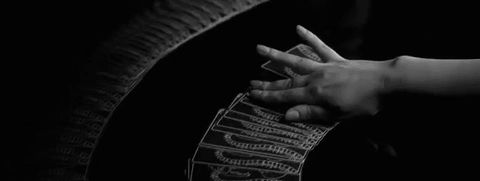
Warning: This is a longer post
The Tarot is arguably one of the most iconic symbols of witchcraft. It’s been used in books and movies for decades, it’s talked about extensively online, and it even has its own section at Barnes & Noble.
Some people are inexplicably drawn to the symbolism and aesthetic of the cards, and some people avoid them like the plague (mostly due to the same superstitions surrounding ouija boards, seances, and all other forms of divination). My goal with this post is to demystify this beautiful form of magic and to hopefully help some of you out there to take your first step into the world of the Tarot.
🔮 What is the Tarot?
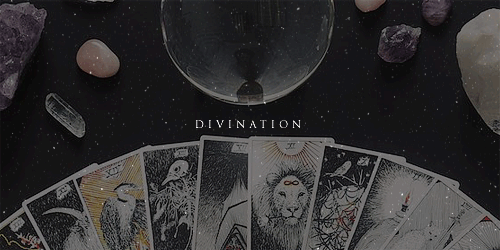
The Tarot, simply put, is a special deck of cards. They can be the size of a tablet, they can be small enough to fit on a keychain (pocket-sized tarot decks are adorable in my opinion), but most are about the size of a cell phone. These cards are used in a type of divination known as cartomancy: divination using playing cards.
Tarot cards are not to be confused with standard playing cards (though, types of cartomancy using regular playing cards do exist). Tarot cards should also not be confused with Oracle cards.
All three of these decks can be used for cartomancy, though, and you’ll have to gauge for yourself which type of deck works better for you as an individual. To clear this up now:
Playing Cards - Originated in the 1300s in Europe (though many historians argue that they were used in the Middle East for centuries before that) consisting of four suits and 52 cards. Each suit contains cards numbered 1-10, plus three more cards denoting a Jack, a Queen, and a King. Primarily used for card games, but also used for divination in some types of folk magic.
Oracle Cards - originated in the 1700s in France. These are special decks of cards used for divination, and each deck is unique to the person who designed and created it. These cards have no set number of cards, no set suits, and no set meaning that is standard to every deck. The creator of the deck will develop their own meanings and symbols that they attribute to each card.
Tarot Cards - originated in the 1400s, arguably either in France or Italy. A tarot deck consists of 78 cards, each with its own specific symbols and meaning. The cards are the same among every tarot deck, no matter who creates it; only the artwork changes. Tarot is almost exclusively used for divination.
🔮 Origins of the the Tarot
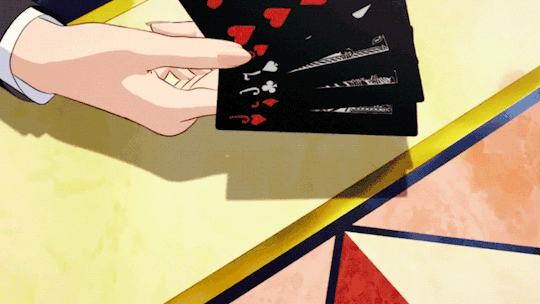
The Tarot deck’s beginnings are just as obscure as its symbology. No one is completely sure when or where the Tarot came about. Historians claim the first accounts of them appear in various letters and documents dated in the 15th and 16th centuries. Back then, though, it seems that Tarot cards really did begin as nothing but a card game.
Back then, they were known as “triumph” cards, a word that eventually led to the English phrase ’trump card’. They were used in a game known as Tarock in Germany, Triumph in England, Tarocchi in Italy, and Tarot in France.
These decks consisted of the same standard for all card decks - four suits with ten cards each, plus court cards for each suit. However, the triumph decks also incorporated 22 additional cards that represented different medieval archetypes (The Magician, the Fool, the Emperor, etc.).
In the original game, two people would take turns laying down cards in a way similar to Uno. If your opponent laid down a card, you then had to lay down a card of the same suit or number. If you didn’t have one, you had to lay down one of the 22 ‘triumph’ cards. The first person to run out of triumph cards lost the game.
In the 16th and 17th centuries, people began to play a different game with these cards, though. In this newer game, a player would lay down several ‘triumph’ cards, and then their opponent would have to create a short sonnet describing a story told by those specific cards, kind of like a ‘create your own adventure’ game, or an Ad-Lib.
At some point after this new game was invented, historians begin to see accounts of players taking the game a step further and actually using the game to tell the fortunes of the players.
Before long, tarot divination was running rampant throughout most European countries, though mostly done behind closed doors. However, it was a very well-known practice, and there are even accounts of many royals and noblemen visiting ‘tarot readers’ to have their fortunes told.
Occultists became fascinated with the Tarot throughout the 18th and 19th centuries, claiming that the symbolism in the Tarot held ancient knowledge of magic and the universe. Some even claimed that it was the only surviving 'book’ from the Library of Alexandria.
In the late 1800s, the Hermetic Order of the Golden Dawn deeply studied the symbolism within the Tarot, and eventually released the infamous Golden Dawn Tarot deck. This was the first deck to attribute Kabbalistic, astrological, and elemental associations to the cards.
Since then, hundreds and hundreds of decks have been created by witches and occultists all over the world, each one throwing their own spin on this divinatory tool.
🔮 Parts of a Tarot Deck
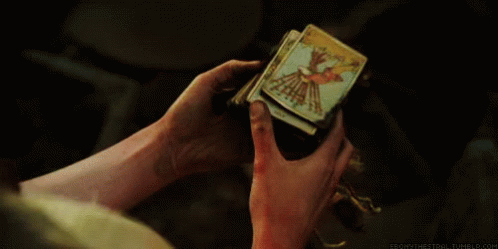
A tarot deck consists of 78 cards, divided into two groups: The Minor Arcana ('Lesser Secrets’) and the Major Arcana ('Greater Secrets’).
The Minor Arcana is made up of 56 cards that are pretty standard. There are four suits (typically Wands, Swords, Coins, and Cups, though newer decks use Pentacles instead of Coins). Each suit has cards numbered 1-10, as well as a Page, Knight, Queen, and King. In Tarot divination, the Minor Arcana represents minor events in a person’s life, such as day-to-day activities.
The Major Arcana is made up of 22 trump cards, each with its own unique meaning. The Major Arcana symbolically tells a story of a person reaching spiritual fulfillment, beginning at Card 0 (the Fool) and ending at Card 21 (the World). In Tarot divination, the Major Arcana represents large and important events in a person’s fate, usually signifying a new 'chapter’ in someone’s life or a life-altering decision. These cards are:
0 - The Fool
1 - The Magician
2 - The High Priestess
3 - The Empress
4 - The Emperor
5 - The Hierophant
6 - The Lovers
7 - The Chariot
8 - Strength
9 - The Hermit
10 - The Wheel of Fortune
11 - Justice
12 - The Hanged Man
13 - Death
14 - Temperance
15 - The Devil
16 - The Tower
17 - The Star
18 - The Moon
19 - The Sun
20 - Judgment
21 - The World
🔮 How is Tarot able to tell the future?
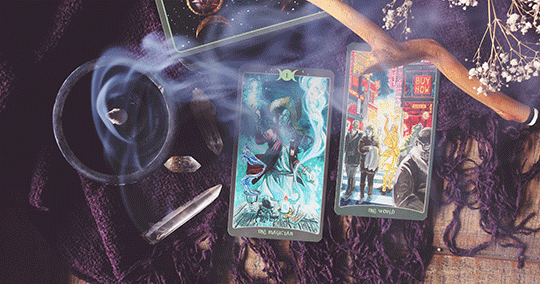
This is one of the most speculated questions among witches and occultists. Simply put, it depends on what you believe.
Some practitioners have a specific spirit or deity that they work with, such as their ancestors or a personal deity. They use the cards as a tool to channel the voice of these entities, and rely on the knowledge of the spirit or god to predict the future.
Some practitioners believe that the Tarot itself has a spirit that lives within the cards, and this divinatory spirit will reveal hidden knowledge through card readings.
While both of these can totally be true - and while Tarot decks are a perfect tool to communicate with spirits and gods - I have found that my Tarot decks will give accurate readings even if there are no spirits around, and even if I sense no spirit in the cards themselves.
This leads me to one of the more new-age beliefs, which I’ve heard circulated in many chaos magic circles. There is a wonderful book called The Chaos Protocols by Gordon White that talks about this theory extensively.
Basically, the theory states Tarot cards are not the ones telling the future: you are. While humans are very much earthly creatures that exist in this material world, we also possess a consciousness or spirit that exists in higher dimensions. In these higher dimensions, constructs like space and time are less concrete and more fluid. Many astral travelers describe experiences where they are able to see through time while in the astral dimensions, and this Tarot theory builds off of that.
In this theory, the Tarot cards are nothing more than a way for a person to tap into their subconscious mind (the 'higher self’), and their higher self relays information about the future through the card reading.
Whatever way you practice, whatever you believe, the Tarot is a deeply spiritual and personal tool, and I would advise learning its secrets directly from the cards themselves.
🔮 How to Read the Tarot
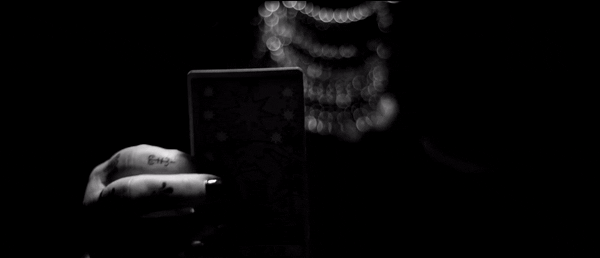
In reality, there is no wrong way to read the Tarot. The bond between a witch and their Tarot deck(s) is typically very personal, and many readers find that individual decks have their own personalities and prefer to be read in a certain way or for a specific reason (general readings, love readings, health readings, etc.).
For instance, I have one deck I will use to read for others. I have another deck I will only use to read for myself. I also have a deck that I only ask questions about my relationship. And so on.
In general, Tarot divination is pretty simple.
Begin by shuffling the deck with a specific purpose or question in mind.
You’ll reach a point where the deck feels 'ready’. Use your intuition, and trust your gut.
If you wish to do a spread, begin pulling cards off the top of the deck and lay them out in the spread. If doing a one-card reading, pull a card off the top. If you wish to simply have a 'conversation’ with your deck, pull as many cards off the top as feels right.
Interpret your card(s) using both the actual meaning of the card (which you can usually find in a booklet that comes with your deck, or you can also use the meanings found online) as well as your own interpretation of the symbols in the card. If you’re using a spread or multiple cards, it can also be helpful to look at the reading as a whole and see how the meanings of each card relate to the other cards in the spread.
Once you’re done, put the pulled cards back into the deck.
🔮 A Simple Spread
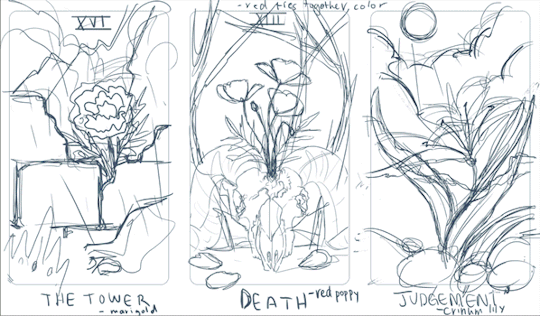
This is the spread I will use most commonly. It is a simple three-card spread to reveal a glimpse of the past, present, and future.
Pull one card from the deck and lay it down in front of you. This card represents your current situation.
Pull a second card and lay it down to the left of your first card. This represents the circumstances or events that led you to your current situation.
Pull a third card and lay it down to the right of your first card. This represents where your current situation will lead you if you stay on your current path.
🔮 Some Final Thoughts
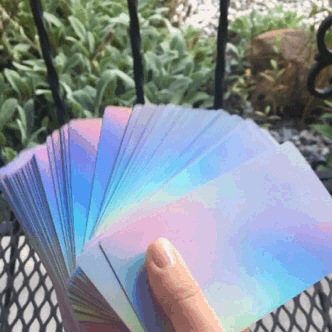
Such as the first card in my spread described above, a card that represents you or your current circumstances is called a significator. Significators are not necessary, but are helpful to base questions off of and build the rest of the reading around.
By no means do you have to follow the reading method I’ve listed above. Shuffling and pulling cards is a very intuitive and personal process. Some readers will lay all the cards out and pick some at random. Some readers will shuffle until one or more cards fall out of the deck. Experiment with your cards and see what feels right.
The idea that Tarot decks have to be gifted to you is a superstition. The decks I’ve bought for myself work just as well as the ones others have given to me.
It is wise to cleanse your deck when you first get it, but I find it a bit impractical to cleanse your deck every single time you use it, especially if you read for yourself daily.
You do not need a special bag to keep your Tarot cards in. All of my decks live happily on my altar.
Tarot cards are not just for divination. They can also be utilized in spells to represent people, spirits, deities, or energies.
You can create a very powerful protection spell by placing the 22 Major Arcana cards in a circle around you.
Oracle cards are very similar to Tarot cards, except that they don’t follow the standard layout of the Minor and Major Arcanas. Oracle cards are divination cards that have their own symbols, meanings, and layout created by the designer of each specific oracle deck. These can often be easier to use, especially for beginners, because they are usually not as cryptic or archetypal as the traditional Tarot.
Do not feel ashamed or less effective if you have to look up the meaning of each card. I’ve been reading the Tarot for 7 years now, and I still have to look up card meanings every now and again.
Tarot readings do not show a future that is set in stone. They show the future based on current circumstances. If a circumstance changes (such as you changing your mind about a course of action), the future will also change.
• • •
Brightest blessings, and best of luck 🌙
2K notes
·
View notes
Text
good questions to ask tarot
in my opinion you can ask the tarot anything, but here are some ideas for those who don’t know where to start
Love/Relationships:
- What kind of partner would be best for me?
- How will I know when I’ve found the right person?
- Is my heart ready for a relationship?
- Is the person I’m interested in right for me?
- Is there anything I need to know about the person I’m interested in/dating?
- Are there any red flags in my relationships that I’m oblivious to?
- Is the person I love deceiving me in some way?
- What purpose does this relationship serve in my life?
- How can I build more emotional intimacy between me and my partner?
- How can I attract love into my life?
- What’s the biggest obstacle in my relationships?
- What stops me from getting emotionally vulnerable with my loved ones?
- How can I be more sensitive to my loved ones needs?
Career/Life Path
- How can I become more open to understanding my life’s purpose?
- What would be the result of pursuing the career I have in mind?
- What should I do to figure out which career path is meant for me?
- What obstacles do I need to overcome in order to achieve my goals?
- Are the goals I’m working toward right for me?
- What can I do right now to better align me with my life’s purpose?
- How can I unlock my hidden talents?
- What skills do I possess that I can utilize to get closer to my goals?
- What’s the best strategy to advance in my career path?
Feeling Stuck/Depressed/Anxious
- What is the root of my emotional turmoil?
- Why am I still carrying this emotional baggage?
- How can I let go of emotional burdens stopping me from being my best self?
- What is the reason that I feel stuck and directionless right now?
- Where can I find my next new adventure?
- Why does _________ bother me so much?
- What can I focus on to clear my mind of what’s weighing me down?
- What action do I need to take to be more emotionally balanced?
- How can I find what makes me happy?
Relationship Troubles or Break-ups
- What is the root of the problems in my relationship?
- When did these problems start to cause conflict?
- Should I try to stay and work things out or should I just move on?
- Is my relationship causing more harm than good?
- I know this relationship is bad for me but I don’t know how to leave. What should I do?
- What purpose did this relationship and its ending serve in my life?
- What was I able to learn from this experience?
- How can I ease my mind and let go of my grief?
- Why did this break-up have to happen?
Spirituality
- How can I become more aligned with my spirituality?
- What purpose does spirituality serve in my life?
- What does my higher power look/feel like?
- What does the universe want me to know right now?
- How can I open myself up to receive messages from the universe and/or my higher power?
- How can I gain more awareness of my subconscious mind?
- What’s blocking my intuition?
- How can I become more in tune with the universe’s vibrations?
- How can I find my spiritual purpose in my life?
- What action can I take to strengthen my spirituality?
You!
- What’s something unique about who I am?
- How can I gain more awareness of my identity?
- What best describes my personality?
- What is a trait that others can see in me that I’m oblivious to?
- What kind of hidden talents do I possess?
- How can I unlock my true passion?
- How can I be more confident in my self-expression?
- What’s a good way to learn to express my true emotions?
- Where do you see me in the future?
- What do I still carry with me from the past?
7K notes
·
View notes
Text
🌌 Witchcraft PSA: The Chakras & Cultural Appropriation ❌
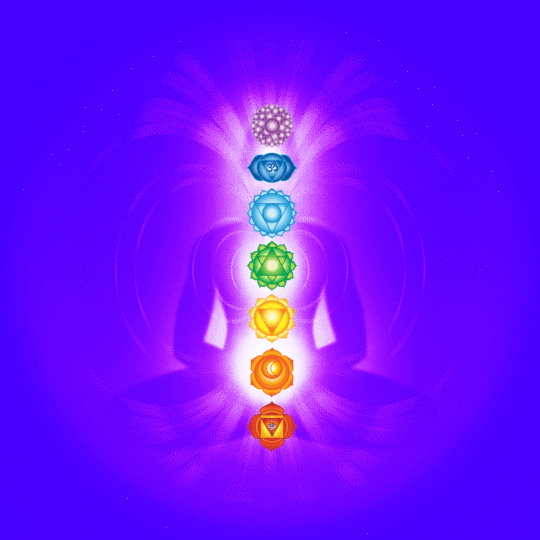
Warning: This is probably the longest post I've written so far, so be prepared for a VERY long read.
Disclaimer: I do not claim to be an expert, a historian, or a theologist. I am simply a witch, a student, and a POC living in the United States where many aspects of pagan spirituality are often appropriated from other cultures and perpetuated through simple ignorance. I'm sure this post will generate some type of controversy, but I do not mean to attack anyone or their beliefs with this post.
So. Here's the big one, guys. The post I've been dreading making but have really wanted to write for a while.
Cultural appropriation is one of the hottest topics in the modern witchcraft community, and the discourse about it on tumblr is far-reaching and incendiary at best. The problem: Where should witches draw a line between explorational spirituality and cultural appropriation?
I'm not here to lay down laws of morality. I'm not the cultural police. But I DID have a very eye-opening experience recently that led me to create this post.
I'm a white-passing minority, and I won't pretend that this doesn't lend me a degree of privilege in America. Especially as a witch, many doors are open to me. Just within the witchcraft community, I look white enough to be welcomed whole-heartedly into most neopagan circles. That's not to say that blatant racism is abundant within the pagan community, but we can't deny that many non-white cultural practices are heavily stigmatized. For instance, as SOON as any of my "light worker" friends hears that I have a family background in Santeria and Brujeria, the FIRST thing I hear is, "Oh, I don't mess with that dark stuff," or "Well, I don't like the idea of hurting animals and other people." And don't get me started on the ignorant conversations one of my dark-skinned, Vodou-practicing friends has had to sit through before.
Like, what?
Because of this, I'm often the first person within my social circles to stand up for cultural barriers and denounce cultural stigma. Above all else, I try to respect the hell out of closed cultures and educate myself about cultural appropriation.
So, it was much to my dismay when I discovered that I have been culturally appropriating the chakra system for the last 11 years of my witchcraft practice.
The chakra system and its use in western occultism is one of the most heavily debated topics in the witchblr community. A simple search will yield dozens upon dozens of posts, each filled with witches claiming that usage of the chakra system either IS or IS NOT appropriation. For the most part, I've tried to stay out of this debate. I've incorporated the chakras into my practice since I began, but I thought my oriental heritage and my "thorough" understanding of the chakras made this okay. But, lo and behold, I was sorely mistaken.
So, after some deep research into this topic, and after talking to several Hindus and Buddhists, here's my attempt to shed some light on this issue.
What are the chakras (according to Western occultism)?
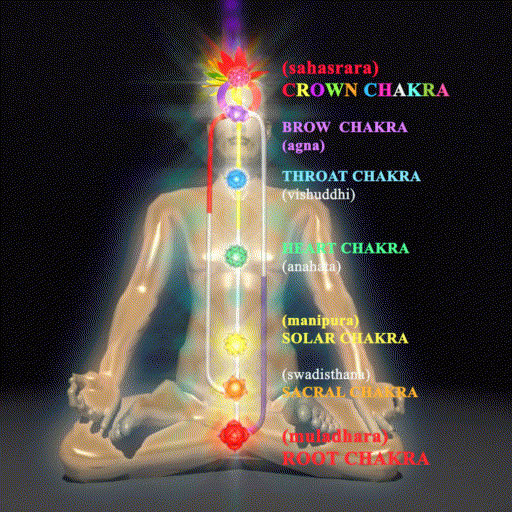
As a brief overview, the chakras are believed to be spiraling energy centers that exist within the subtle body. There are seven of them, and they lie along the spine in places where large amounts of nerves and vital organs exist. Similar to the way our brain is a large compilation of nerves, these chakras are believed to be the intersection points of energy currents within our spirit.
Each chakra rules over a particular psychological, physical, and spiritual state of being, and disruptions within the chakras are believed to lead to different types of mental, emotional, and physical illnesses.
These chakras are depicted as lotus flowers with varying numbers of petals, and each is represented by its own color. Each one also corresponds to a Sankskrit syllable mantra which is believed to activate the chakra when spoken aloud.
In order, they are:
❤ Muladhara - The Root Chakra - Connection to the Earth and the Self - Located at the base of the spine - Depicted as a red lotus with 4 petals - Mantra: LAM
🧡 Swadhisthana - The Sacral Chakra - Connection to sexuality and instinct - Located near the sexual organs - Depicted as an orange lotus with 6 petals - Mantra: VAM
💛 Manipura - The Solar Chakra - Connection to will and identity - Located in the Solar Plexus - Depicted as a yellow lotus with 10 petals - Mantra: RAM
💚 Anahata - The Heart Chakra - Connection to love and relationships - Located in the heart - Depicted as a green lotus with 12 petals - Mantra: YAM
💙 Vishuddha - The Throat Chakra - Connection to voice and communication - Located in the heart - Depicted as a blue lotus with 16 petals - Mantra: HAM
💜 Ajna - The Third Eye Chakra - Connection to spiritual awareness - Located above and between the eyes - Depicted as a purple lotus with 2 petals - Mantra: OM
🌈 Sahastrara - The Crown Chakra - Connection to Source/the Universe - Located at the top of the head - Depicted as either a purple, rainbow, or white lotus with 144,000 petals - Mantra: Silence
Along with these associations, each chakra is often associated with various crystals, herbs, and spirits.
What are the chakras within their original cultural context?
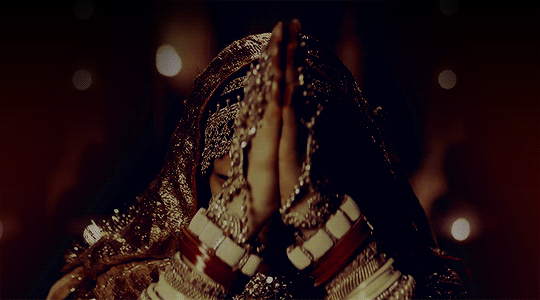
The concept of 'chakras' arose from a practice known as Tantric Yoga. This was a spiritual system that began to gain popularity in India and other eastern cultures between 600-1300 CE. Up until this point (and concurrently as well), most types of spirituality in these cultures was very transcendental - that is, they had a fundamental belief that the Divine was transcendent and inherently 'above' the natural world. Therefore, in order to commune with the divine, it was believed that the material world had to be renounced and denied, and higher states of consciousness had to be achieved in order to commune with divinity.
Tantric spirituality flipped the script. It adopted the idea that divinity was an inherent quality of the natural world, and that a person could freely commune with the divine by opening themselves up to the world around them through mindfulness and all-embracing compassion.
The philosophies and teachings of tantric yoga (loosely known as 'tantras') became extremely widespread throughout this period and dramatically shaped many emerging sects of Hinduism and Buddhism. As this philosophy spread, many different types of specific spiritual practices arose, many of which can be recognized in our Western ideas of holistic meditation - such as mantras, mudras, mandalas, and even modern Western yoga.
One such concept that gained popularity was the idea of chakras - focal points of spiritual energy in the body. However, these chakras were very different than what Westerners think of today.
There were a LOT of different traditions that arose from Tantric teachings, and each one had its own unique belief about chakras. The most obvious difference between these chakra traditions was that each one believed in a different number of chakras. Some systems had three, others had six, others had seven, others had nine, others had 10, others had 21, etc.
Each one approached the chakras a bit differently, and so each one believed in a different number of chakra centers.
What are some of the primary differences between Western Chakras and Tantric Chakras?
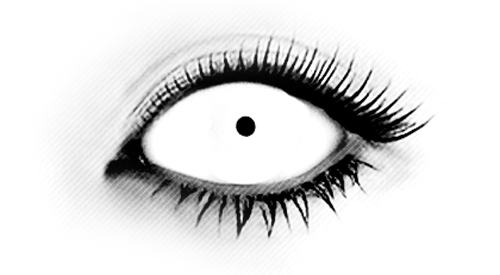
The most eye-opening difference for me was that Tantric chakras have none of the associations that Westerners believe in today. Original practitioners of Tantric spirituality did not associate specific colors with each chakra, they did not associate physical or psychological states with them, they did not associate any herbs or crystals or planets with them, and they did not even associate Sanskrit syllables with them. What's more, they didn't even believe they were located in fixed points on the body.
Loosely, they believed that the chakras - like all things spiritual - were very fluid. They could often be accessed through general areas of the body, but they definitely were not stagnant, fixed points. This also accounts for the varying number of chakras, because it was believed that the chakras would manifest in different ways depending on what traditional practice you used to approach them.
Many traditions did believe that these chakras could be depicted as lotus flowers with various petals, but these were not meant to inherently describe the individual chakra. Rather, these depictions were meant to serve as a visualization for a person to meditate on when trying to access a specific chakra.
Along with this, these traditions did not assign specific names or syllables to these chakras - at least not the ones we use today. Rather, it was believed that Sanskrit syllables carried an inherent magic or divine energy within them (similar to Kabbalistic views of the Hebrew language), and they assigned various letters and syllables to the petals of each lotus flower, which corresponded to various energies in nature.
The symbols, names, and Sanskrit syllables popularized in the West today don't even correspond to any kind of Tantric chakras. They actually correspond to the elements within certain traditions of eastern spirituality. They also are not meant to be uniquely associated with any individual chakra. Rather, these syllables were used in meditation to invoke specific elemental energies into different chakras depending on the situation.
If your tradition believed that the heart chakra could affect the relationships in your life, and your personal relationships happened to be very stagnant, you could vibrate the syllable for the Wind element and invoke that energy into your heart chakra to help your personal relationships become more dynamic. Etc.
This brings me to the final thing I'd like to talk about: Westerners are NOT using the chakras for their original purpose.
The only concrete associations that tantric traditions had for the chakras were deities. These traditions believed that each of their chakras was associated with a specific Hindu deity (though the specific order or deities listed varies between tradition and time period).
The original purpose of 'working with chakras' was to eventually invoke the energy of these specific deities into a person's chakras in order to become closer to these gods and goddesses and emulate their behavior and teachings in daily life.
How did the original concept of chakras get misconstrued in Western culture?

Oh, boy. This is a tough answer that's soaked in 1000 years of colonialism, racism, cultural and linguistic barriers, and simple misunderstandings.
But, simply put, the appropriation of tantric chakras can be narrowed down to four specific individuals.
In 1577, a spiritual teacher and academic named Purnananda Yati wrote a treatise of tantric teachings called the Shatchakra Nirupana, or roughly 'An Explanation of the Six Chakras'.
In this treatise, Purnananda lays out the modern framework we see today - six chakra centers within the human spirit, with an additional seventh chakra above the head that connects the spirit to the divine source. He based this concept off of an earlier writing from the 13th century, which also details this framework but openly acknowledges that this is just ONE tradition, and that many other traditions also exist.
In 1918, a British scholar named John Woodroffe translated Purnananda's treatise from Sanskrit into English, and unfortunately, there were many mistranslations in Woodroffe's version. This translation was what eventually gained extreme popularity throughout academic and occult circles in the West.
Throughout the 1930's, 40's, and 50's, the renowned European psychologist, Carl Jung (who you might recognize from your Psych 101 class), became fascinated with the idea of chakras and their relation to consciousness. Throughout this time period, Jung wrote extensively about potential connections between the seven chakra centers and various psychological states. This is where the chakras became associated with different states of being, such as instinct, will, and sexuality.
Finally, in 1987, an American occultist and spiritualist named Anodea Judith published a book entitled Wheels of Life. In this book, Judith talks extensively about the seven chakras, and even lists correspondences between the chakras and various herbs, crystals, elements, planets, tarot cards, deities, and archangels.
Her book became wildly popular within holistic and spiritual circles, and set in stone the way that modern neo-pagans view the chakras in the West.
So, are chakras part of a closed culture?
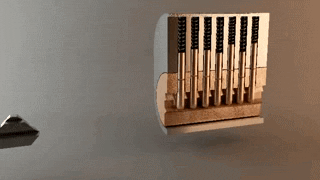
Yes and no.
Chakras as we view them in the West are, at best, a distorted and bastardized version of a beautiful, ancient belief. They were studied and theorized by many traditions for over a thousand years, and many of these traditions still exist today. Most commonly, they are still used in Shaivism, which is one of the most prevalent forms of Hinduism in the East.
Many of these living traditions ARE, in fact, closed. But more than that, to perpetuate (and worse, claim spirituality from) a distorted, white-washed version of an Eastern religious belief is just plain disrespectful and potentially racist at its worst.
That being said, though, there are certain living traditions which ARE NOT closed, such as the exceedingly popular Tibetan Buddhism. These traditions recognize many of the same teachings and are freely shared with people of any nationality or background - as long as you put in the work to learn about them.
The Main Takeaway

The chakras, as viewed in the West, are incorrect. This is not to disclaim any type of spiritual experience Westerners may have had by utilizing chakras in their practice, but I'm of the opinion that Westerners should recognize that the "chakras" they believe in don't actually have any basis in ancient spirituality.
That being said, the concept of a subtle body and energy centers within the human spirit is not unique to the Far East.
The concept of currents and centers of energy within the body can be found in cultures the world over, from India to Japan to Korea to Africa to the Middle East, and even among the Native Americans who never came into contact with these other cultures (as far as we know).
The human soul, the subtle body, and spiritual energy are concepts that supercede cultural boundaries, and if studying and utilizing them is an integral part of your craft, then I encourage you to follow your personal path and find connection with the Universe in whatever way you feel called to.
But. Perhaps developing your own unique system and beliefs about the energy centers within the body is the best course of action for us Westerners. Until we ourselves make the effort go join one of those (open) traditions, subscribing to the modern Western system of "chakras" is, in my opinion, cultural appropriation.
• • •
Brightest blessings, and best of luck 🌙
3K notes
·
View notes
Text
School Witchery
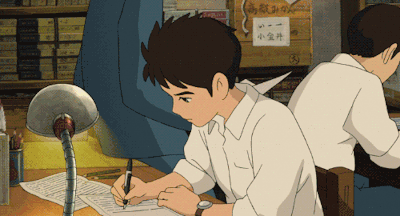
Magic resources for all my student witches out there! Remember, magic isn’t going to save your grades if you don’t also put the effort in. But it can certainly support you through your journey as a hardworking student <3
General tips and advice:
To the witches who are going back to school
Magical school tips
Back to school witch tips
Tips for high school witches
School witch tips
Herbs and crystals to help with school
Kitchen witchcraft for school lunches
University/college witch tips
Everything you need to know about being a college witch
College witchcraft
College witch tips
Little tips for the college witch
Dorm life:
Dorm friendly offerings & altars
Dorm hacks for the college witch
Dorm room witch tips
Dorm witchery
Living magically with roommates
Kitchen witchcraft for the dorm
Candle/incense alternatives: [X] [X] [X]
Studying:
Witch study tips
Study candle spell
Study sachet
Spell for focus on homework
Stay strong and carry on study spell
Student witch hacks for focus and concentration
Back in focus spell bottle
Studying tips for witches
Tests and exams:
“I can do this!” motivation bottle
Cramming for a test spell
A charm to help you succeed on exams
Using sigils on your tests (tip)
Sigils masterpost for finals week
A spell for finals week
Focus for finals spell bottle
Final exam spell
Other spells:
A spell for good grades
Back to school success sachet
School success sachet spell
Knot spell for doing well in school
Sweet school year spell
“Leave me be” spell
Spell to banish anxiety and get a good mark
Restful sleep spell jar
Spells for back to school (masterpost)
Sigils for school, study and education (masterpost)
You may also like:
Magic to Replenish Energy
Rejuvenating witchcraft
Housewarming magic (dorm)
Sick witchery
Periods suck. Witchcraft helps.
Mentally ill witchcraft: For your symptoms
Chronically ill witchcraft: For your symptoms
Drink Magic Masterpost
Bath Magic Masterpost
Bedridden witch series
25K notes
·
View notes
Text
Tarot in Spells
this is a list of magical associations for every tarot card, they can be added into spells to amplify your intentions and strengthen your manifestations
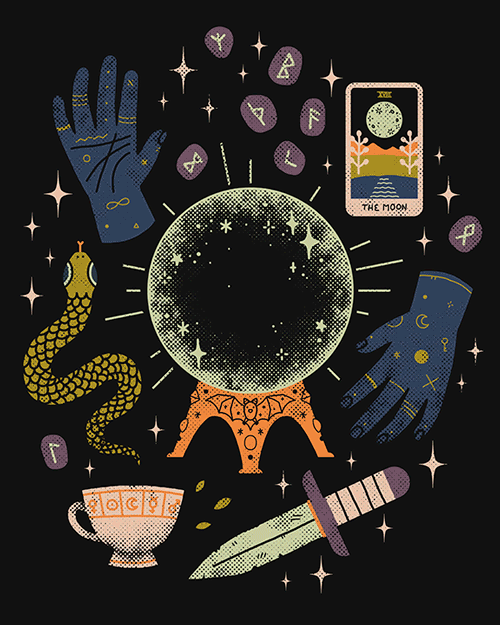
Wands are connected with the Fire element and is centered around movement, direction, energy, passion
Swords deal with thinking, communication, perception, and issues dealing with truth, connected to the air element
Cups are connected with water, and the full spectrum of emotions. every emotion imaginable is covered in the cup’s suit.
Pentacles are connected with Earth and are symbolic of manifestation, rewards, material wealth and material abundance.
The Fool creates new beginnings and can be paired with other cards. ex: the fool + the lovers for new romance, the fool + pentacles for new opportunities, etc.
The Magician increases your power and capability on all levels, willpower, emotional security, balance within yourself, etc.
The High Priestess increases your psychic abilities, mediumship abilities, and intuition
The Empress will help you with creativity and creative endeavors
The Emperor establishes order, structure, and command
The Hierophant can be used in a lot of ways, my favorites are 1. Pairing it with the fool to attract a new mentor, 2. Using it to summon a spirit guide or ascended master
The Lovers help invoke and attract love, partnership, mutual relationships, and passion
The Chariot is amazing for success, and triumph. I always use this in success spells for exams, tests, and projects. The Chariot will help the best possible outcome for a situation to arise
Strength will help you master your emotions
The Hermit is good for rituals and meditations based going within and gaining a better understanding of your own self, and life purpose.
The Wheel of Fortune can be used for luck, change, and getting a desired situation moving
Justice is great for truth, legal matters, and justice
The Hanged Man buys you time for a situation you aren’t ready to face, delays events
The Death card works well for ending situations, closing doors, gaining closure, and new beginnings
Temperance will restore balance and serenity to any situation
The Tower is best used for hexing and cursing, brings misfortune, unhappiness and chaos
The Star card is good for when you are casting spells focused on gaining something, The Star card is centered around healing, openness, and hope
The Moon helps develops intuitive abilities and can be used to send bad dreams
The Sun is used in spells for summoning happiness, success, and health
Judgement will help clear confusion and help you with understanding your life mission similar to the Hermit in that aspect
The World invokes wholeness and completion
Page of Wands: works with communication, messages, action, and passion
Page of Cups: boosts creativity, taps into your spiritual nature to bring out new creativity
Page of Swords: amplifies ingenuity and creativity, helps deliver messages from one person to another, can be used to attract someone’s attention to yourself
Page of Pentacles: good for grounding and centering spell work
Knight of Wands: speeds up any workings involving passion, love, and creativity
Knight of Cups: speeds up workings dealing with emotions, psychic development, inner strength
Knight of Swords: speeds up workings involving communication, balance, and thinking
Knight of Pentacles: speeds up workings dealing with manifesting abundance, material wealth, prosperity, and creativity
King of Wands: associated with leadership, command, can help you gain authority
King of Cups: associated with personal feelings, can help you resolve personal conflicts and inner turmoil
King of Swords: aids in strengthening your communication and speaking skills
King of Pentacles: invokes luxury, great card for business success
Queen of Wands: establishes a sense of self security and sufficiency
Queen of Cups: develops your psychic abilities, also helps with understanding/controlling your emotions
Queen of Swords: helps you develop stronger focus
Queen of Pentacles: abundance, creativity, fertility
Aces: used for new beginnings based on the energy represented in that suit
Two of Wands: positive progress in any situation whether it be romance, health, career, etc.
Three of Wands: business prosperity
Four of Wands: strengthens any type of relationship
Five of Wands: used in hexes and curses to invoke conflict, and arguments
Six of Wands: manifests recognition, success,
Seven of Wands: use this card when you’re in a tough situation, it will help you succeed and come out of it stronger
Eight of Wands: directs energy and intentions towards a specific goal or purpose, helps to speed up workings
Nine of Wands: use this card when you come face to face with a difficult task, this card will keep you brave and strong
Ten of Wands: can either be used to achieve something great, or it can be used in a hex or curse to manifest burdens
Two of Cups: union, strengthens romantic relationships
Three of Cups: strengthens a friendship
Four of Cups: dissatisfaction with surroundings
Five of Cups: causes despair and sadness
Six of Cups: lifts your mood when you’re feeling down
Seven of Cups: illusions and deceptions
Eight of Cups: used to help you move on from the past
Nine of Cups: make a wish and use this card’s power to grant your wish, invokes happiness
Ten of Cups: brings happiness to relationships of all kinds, friends, family, romantic, etc.
Two of Swords: used in curses and hexes to cause someone to have a limiting mindset
Three of Swords: heartbreak and emotional strife
Four of Swords: used in healing spells, sleeping aid
Five of Swords: manifests conflict, and failed success
Six of Swords: this card will aid you when you face a difficult change, helps you to move on and move forward
Seven of Swords: causes betrayal
Eight of Swords: powerful energy that causes isolation
Nine of Swords: sends nightmares and anxieties
Ten of Swords: defeat and betrayal
Two of Pentacles: brings balance
Three of Pentacles: strengthens business connections
Four of Pentacles: manifests financial stability
Five of Pentacles: financial problem
Six of Pentacles: prosperity
Seven of Pentacles: material abundance
Eight of Pentacles: if you’ve worked hard this card ensures you that your efforts will be rewarded
Nine of Pentacles: success, luxury, accomplishment
Ten of Pentacles: success, wealth
Negative aspects of the cards can be used for hexing and cursing
37K notes
·
View notes
Text
Starting Tarot Part I - What is Tarot?

As the second decade of the 21st century draws to a close, interest in mysticism and the occult seems to grow exponentially.
I’ve an article devoted to beginner resources for those wishing to begin a journey into witchcraft. With this surge of interest in the magic comes an equally-strong wave of new diviners. As always, Tarot is a perennially-popular method of divination.
This article inaugurates a short series I’ll be posting, all about taking the first steps into Tarot!
So, lets begin with a simple question…
What is Tarot? What makes a Tarot deck what it is?
All Tarot decks have a certain basic structure. In the distant past, when the Tarot developed, decks often had a more fluid structure. Nowadays, though, the Tarot tends to almost always follow this structure. You can divide the deck into five basic sections or “suits.”
First, we have the Major Arcana. These consist of twenty-two evocatively-named cards. They include such famous ones as The Tower, The Lovers, and The Fool. These are the most well-known and recognizable Tarot cards in the popular mind.
Some readers tend to give more “weight” to the Major Arcana in a reading. I generally agree with this perspective. After all, the Major Arcana cards all represent momentous ideas, events, and people.
Each Major Arcana card corresponds to many different occult concepts. For example, card I - The Magician, corresponds to the element of Air as well as the planet Mercury. It also has myriad other associations that you can read about in various books.
These correspondences create a link between Tarot and other occult systems. These include astrology, Hermeticism, and other systems. I’ll discuss this in more depth later on, in another article.
Trust me, though - it is perfectly possible to read Tarot without that sort of knowledge. If it interests you, though, it is worth a look and may well make things easier!
After the Major Arcana, there’s the Minor Arcana. These are a set of four suits, each featuring ten numbered cards and four “court” or face cards (such as King of Wands).
These suits correspond to the four classical elements. They embody the gamut of the elements’ expression in the universe. If you’re not familiar with the four elements, I’ve got some articles on that here. In short, though, the suits of the Minor Arcana are:
The Suit of Wands, usually associated with the element of Fire, the human Will and creative spark.
The Suit of Swords, corresponding to the element of Air, the intellect, and communication.
The Suit of Cups, associated with the element of Water, emotions, the heart, and romance.
The Suit of Pentacles, corresponding to the element of Earth, physicality, embodiment, health, and prosperity.
Some decks swap the elemental correspondences for Wands and Swords. The ubiquitous Waite-Smith deck uses the above associations, though. Some diviners have strong personal preference for one or the other. If that is the case, choose a deck that reflects that, even if not traditional!
Beyond these elemental associations, each Minor Arcana card has an astrological association, too! For example, the Six of Swords corresponds to the planet Mercury in the constellation of Aquarius.
As I noted above, you don’t have to know astrology or any similar system like that to read the cards. It can be helpful for some readers, but not all! I do recommend all Tarot newbies learn the basics of the four elements, though. Understanding them does make reading the cards much easier in the long run!
Some folks refer to the Minor Arcana as “pip” cards, but that doesn’t make them unimportant! While they tend to represent more transient matters than the Major Arcana, they still have a lot to tell us!
Some decks (particularly pre-Waite-Smith decks) feature “unillustrated” pips. These cards only feature images of the suit symbols (ie, ten swords on the Ten of Swords).
Some readers find such decks less evocative and difficult to read. Others feel that unillustrated pip cards allow deeper engagement with the cards’ numerology. If you think you’ve a preference for one or the other, be sure to look for a deck with that feature.
Many decks used for divination do not have this structure, and thus are not Tarot decks. Some good examples of non-Tarot decks include the Lenormand deck, the Minchiate, and various modern oracle decks.
This doesn’t make them less meaningful or somehow invalid. It simply means that they operate outside of the Tarot paradigm. A lot of those decks are great in their own way, but distinct from Tarot.
But, anyways…
You can find this and all other articles in this series ghost-tagged as #startingtarot on my blog - click here for that!
Expect several more installments in this series (I think five?), each building on the previous, to give you a general introduction to Tarot and becoming a diviner!
114 notes
·
View notes
Text
Magics for Animals, Pets, and Familiars
Updated: July 22, 2017
Spells
Attracting Animals
[Feed the Birds Spell]
[Here, Kitty Kitty: A Few of Your Favorite Things Charm Bag] (cw: sigil)
[To Make Animals Less Afraid of Your Presence]
[A Spell to Find a Furry (or Finned or Feathered or Scaled) Friend]
Blessings
[Bless a Pet]
[Cat Blessing]
[Cat Blessing]
[Pet Blessing]
[Spell to Welcome New Furry Friend to Your Home]
Communication
[Animal Communication Spell: Eve Oil]
[Communicate With Your Pet Spell]
Death / Remembrance
[Animal Release Spell]
[Pet Farewell Ritual]
[Pet Loss Ritual]
[Pet Release Ritual & Jar Spell]
[Prayers for a Deceased Pet Cat]
[Prayers for a Deceased Pet Dog]
[Prayers to Help a Familiar Cross Over / Ease Their Pain]
Finding / Calling a Familiar
[Animal Ally Invitation Spell]
[Another Way of Gaining a Familiar Spirit]
[To Call a Familiar]
[Finding a Familiar]
[One Method of Contacting Familiar Spirits]
[Simple Ritual of Familiar]
[Spell to Ask for a Familiar]
Healing and Health
*Reminder: Do not neglect taking your pet to the vet for a cheaper, magical solution; spells should be used as a boost, not as a replacement, to proper medical treatment for any animal. Be very careful with any flames or small objects around animals. Ensure that you are researching any herbs you will be using to guarantee they will not poison or harm your pet.*
[Emoji Spell to Recover from Illness]
[To Heal a Pet]
[Healing Crystals and Stones for Pets]
[Healthy Pet Spell]
[Pet Healing and Wellness Spell]
Locating Lost Animals
[To Call a Lost Pet]
[Crossroads Lost Animal Spell]
[Lost Pet Spell]
[Spell to Find a Lost Pet]
[Spell to Find a Lost Pet]
Protection
[Animal Candle Protection Spell]
[Animal Candle Protection Spell]
[Animal Protection Spell]
[Cat Protection Bag]
[Cat Protection Spell] (cw: gif)
[Pet Protection and Blessing]
[Pet Protection Powder]
[Pet Protection Spell]
[Pet Protection Spell]
[Pet Protection Spell]
[Pet Protection Spell Bottle]
[Pet Protection Spell Jar]
[Protection Chant for Cats]
[Protection Spells for Animals]
[Protection Spells for Pets]
[Protective Chant for Dogs]
[“Watch Over Me” Pet Protection Guardian]
Miscellaneous
[Familiar Binding Spell] (to strengthen the bond between a person and their familiar)
[Spell for Peace and Harmony] (for cats that need a little help getting along better)
[Spells Involving Cats]
Sigils
[“Animals are drawn to me”]
[“I get a pet soon”]
[“I get a service animal”]
[“I get along well with dogs”]
[“It is my will that my pets will be safe, healthy, and happy”]
[“My cat and I are bonded”]
[“My cat is protected”]
[“My dog is at peace and free of pain”]
[“My lost pet has been found safe”]
[“My lost pet will return to me”]
[“My pet goes to the bathroom only where it’s supposed to”]
[“My pet is safe”]
[“My pet is safe”]
[“My pets are happy and healthy”]
[“My pets remain in good health”]
[“My pet returns home safely”]
[“My therapy pet adapts quickly to my home”]
[“The outdoor cats are safe from harm”]
[“This animal is healed”]
[“This animal is healthy”]
[“This animal is protected”]
[“This pet does not eat my offerings or interfere with my rituals”]
[“This pet is safe and protected in their time of healing”]
Miscellaneous
[Recommended Reading: Animal Communication, Healing & Guidance]
[Tarot Readings for Pets and Familiars]
[Witchy Things to Do for Your Pet]
6K notes
·
View notes
Text
[is alive and has to do stuff because of it] hmmm don’t like that
80K notes
·
View notes
Photo

Here it is guys, my mini masterpost for my tarot spell series so far! This list will of course be updated until I cover all the Major Arcana so stay tuned! 🎴psd credit🎴
Strength
The Empress
The Emperor
The Tower
The Star
The Sun
The High Priestess
Death
The World
The Wheel of Fortune
1K notes
·
View notes
Text
The free PDF folder w/ links
This is where you can find all the Free PDF files I’ve put together, all of which are on GoogleDrive
The entire folder (new PDFs are being worked on so check often)
Beginner Guide to Witchcraft
Witchcraft How-Tos Part I (Grimoires and B.O.S)
Witchcraft How-Tos Part II (Introduction to Tarot) –although this isn’t strictly Witchcraft, it’s still a well loved thing so I had to do a guide on it!
Can I please ask;
That you respect the time and love that has gone into this. This is a lot of work that I’ve done that I’ve spent weeks on, and it’s all so you guys can learn some basic and helpful stuff.
That you reblog this if you have followers who would benefit from this collection
That you do not repost anything
That you do credit any of the illustrations in these guides if you use them (Ashe, ofpotionsandpoison)
726 notes
·
View notes